Drawing the Revolution – A visual archive of the uprising in Serbia
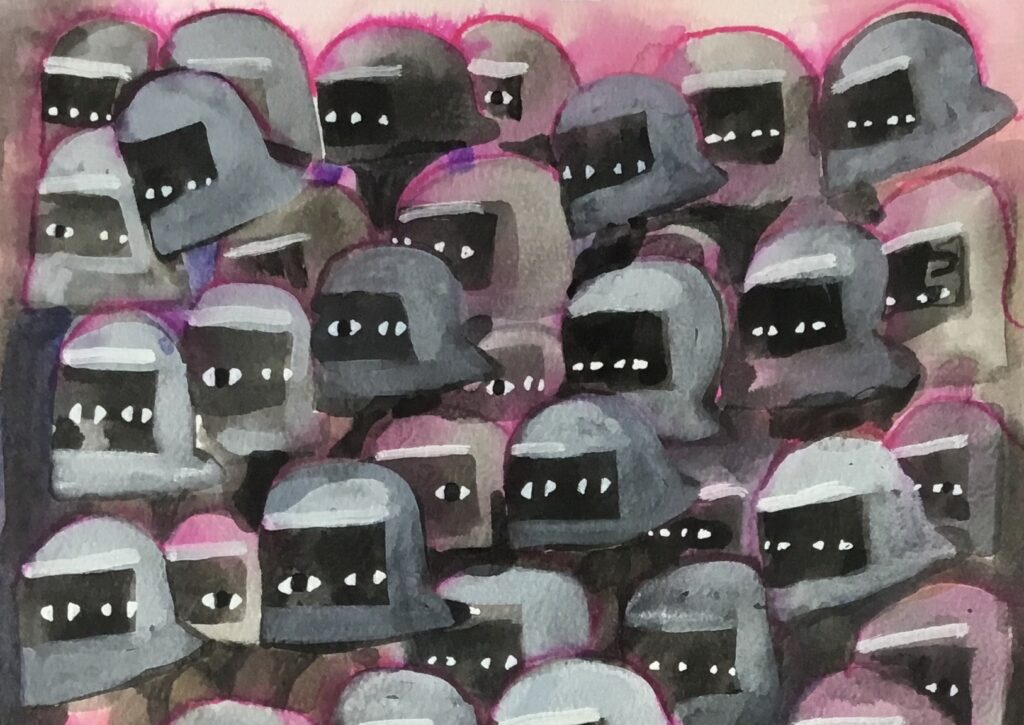
by Dragana Radanović and Guido van Hengel
The demonstrations in Serbia, which began in November 2024, have entered a new phase — shifting from peaceful walks and gatherings to a much grimmer situation. By mid-August, the police and their allies increasingly resorted to violent tools, escalating tensions across the country. There is abundant evidence that the police are supported by groups of masked “loyalists” to the Vucic regime. Protesters have been attacked by masked supporters of the ruling party, armed with sticks, batons, and stones. Also, it is quite possible that hooligans are sent to provoke the police who then has an excuse for violence. As of now, the situation shows no signs of calming down.
In our previous contribution to Drawing the Times, Pumpaj!, we saw comics and visual storytelling as tools of urgency and protest in Serbia. Now, we want to slightly shift the spotlight. We want to bring forward more artists that are building a visual archive of revolt. Each one with their own form, rhythm, and voice. What unites them is a shared sense of responsibility—toward the moment, and toward each other.
Students give you wings (studenti daju ti krila)
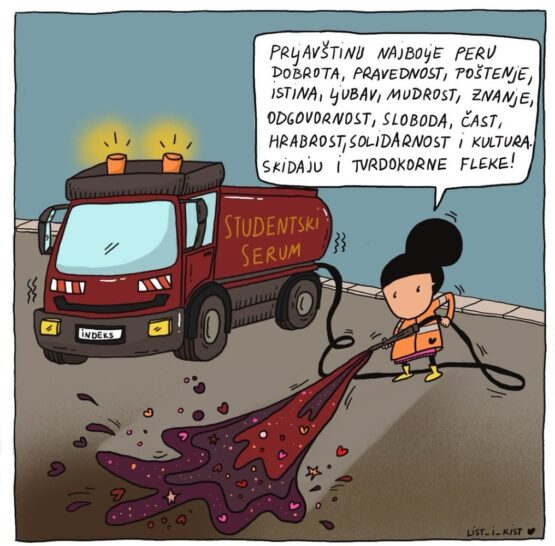
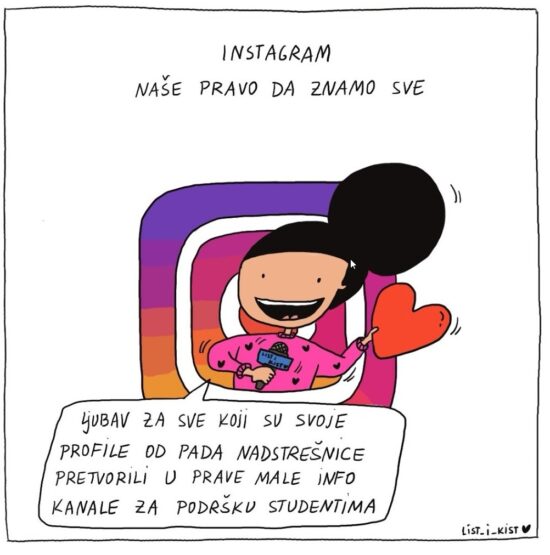
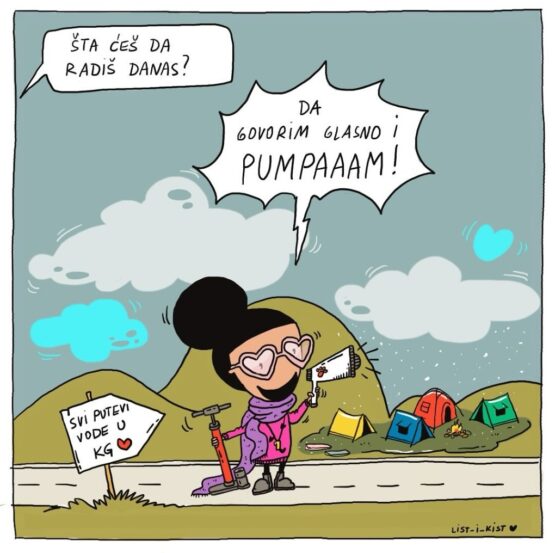
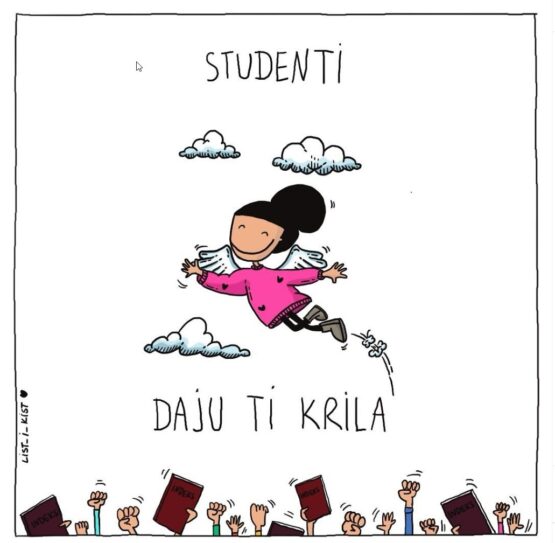
One of the most recognizable voices of this visual uprising is Sanja Đorđević, author of the comic series Crtuljak, shared through the platform List i Kist. Crtuljak, a sharp, rebellious, and deeply expressive alter ego, has become an emblem of daily resistance and reflection.
“Comics through my alter ego, a little girl named Crtuljak, have followed my everyday life over the past few years,” Sanja tells me. “When the station roof collapsed, a powerful wave of love, beauty, solidarity, empathy, culture, and unity emerged across Serbia, led by student initiatives. The people rose up against injustice, repression, political persecution—and I couldn’t stay silent.”
Her comics are a vibrant and satirical chronicle of the movement, populated by protest symbols like Ćaćko, rebellious dumpsters, flying eggs, Batman and Pikachu on the frontlines, bikers, veterans, and teachers. Into these drawings, Sanja pours “the revolt and emotional lava” she felt while following the student marches that went all the way to Brussels and Strasbourg.
She often includes direct quotes from government officials—awkward, absurd, or cold. “Let them remain—for memory’s sake,” she says. “This is our emotional archive. This is our history.”
Silence (тишина)
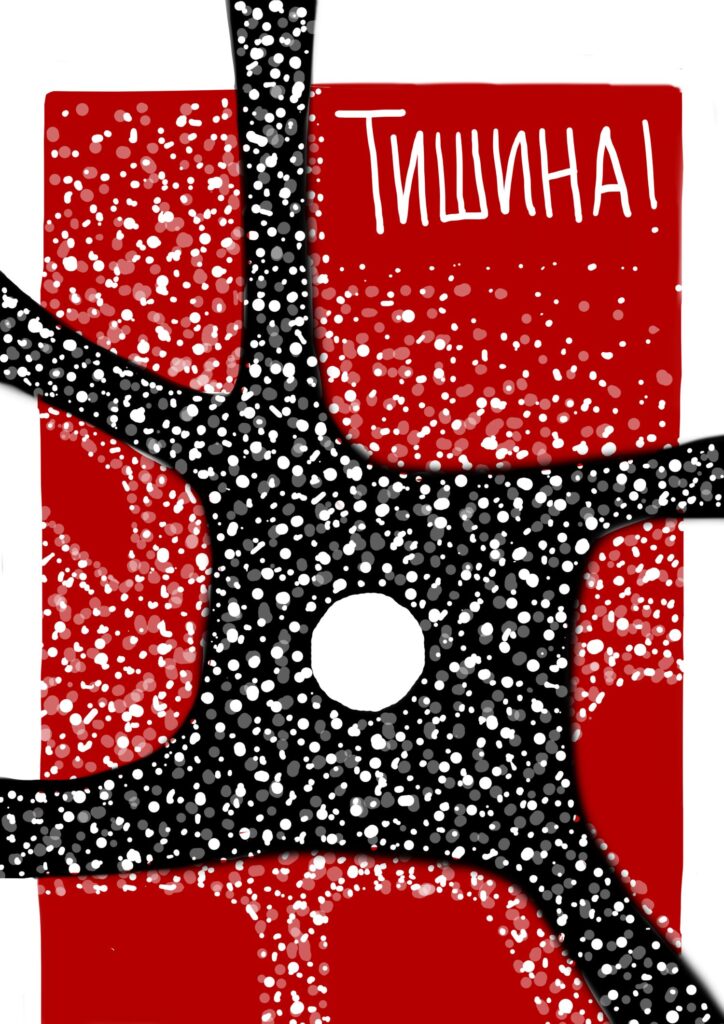
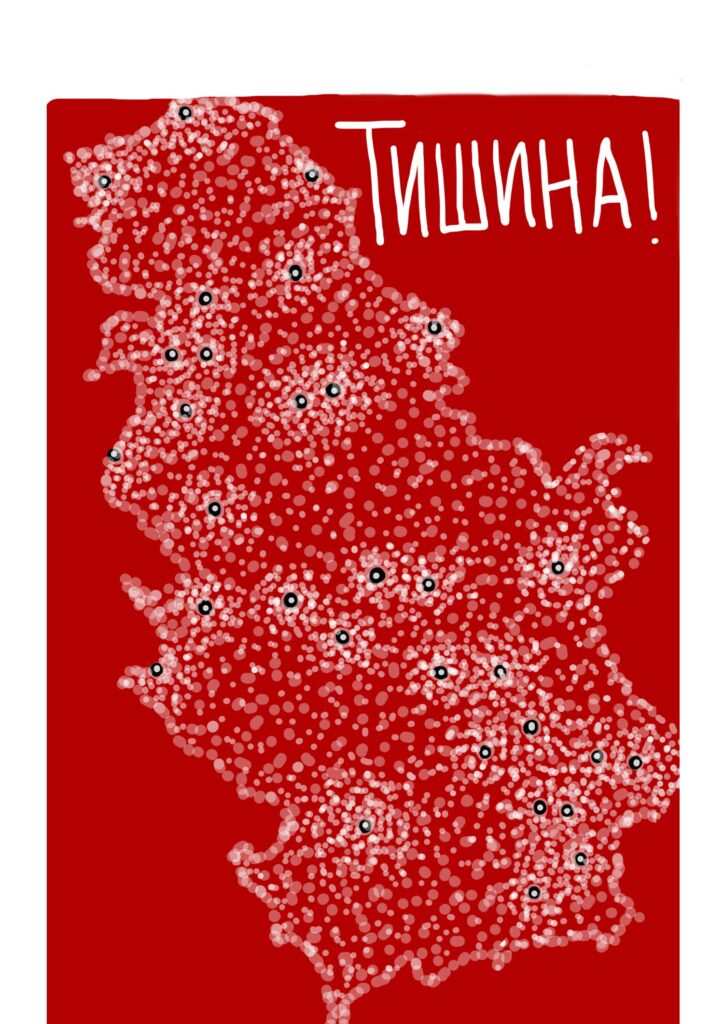
Anja Aleksić is both a student at the University of Arts and an active participant in the movement. Her illustrations Fierce Silence and Echoing Silence capture two powerful protest moments: the mass gathering in Slavija Square in December, and the simultaneous blockades across multiple cities in June.
These works don’t depict slogans or faces, but atmospheres. Weight. Stillness before the chant. The way silence roars when it’s shared by tens of thousands.
Anja’s visual perspective is also influenced by the work—and fate—of Russian photographer Jaroslav Jar Bulavin. His drone video Sve mir (“All Peace”/ “Universe”) went viral after capturing the protest at Slavija from above. But instead of celebration, the artist faced deportation for filming without authorization in restricted airspace.
The case sparked strong public reactions, with many viewing it as an act of political repression—including the student movement Niš Students on Strike.
Disobedience (непослуш)
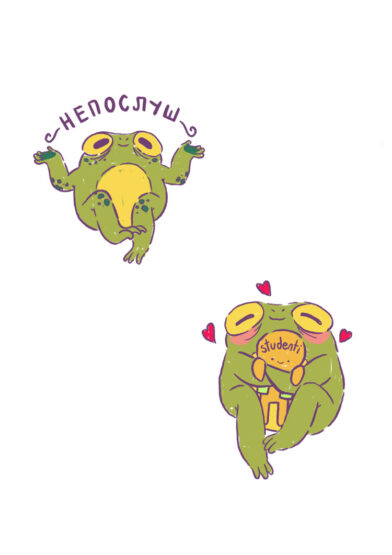
“I usually draw cute and colorful things,” Andrea Tesla admits, “but because of the situation in the country, now is not the time for rainbows and sparkles.”
Instead, Andrea turned to frogs—disobedient, quick, agile, absurd. Her frogs are funny but alert, charming but fierce, echoing the spirit of the young protestors.
“They may be small, but they adapt, they leap. Just like our students. It’s our civic duty to stand by them.”
Her work reminds us that resistance doesn’t have to be loud to be firm. That playfulness can coexist with determination.
riot gear entered the sketches
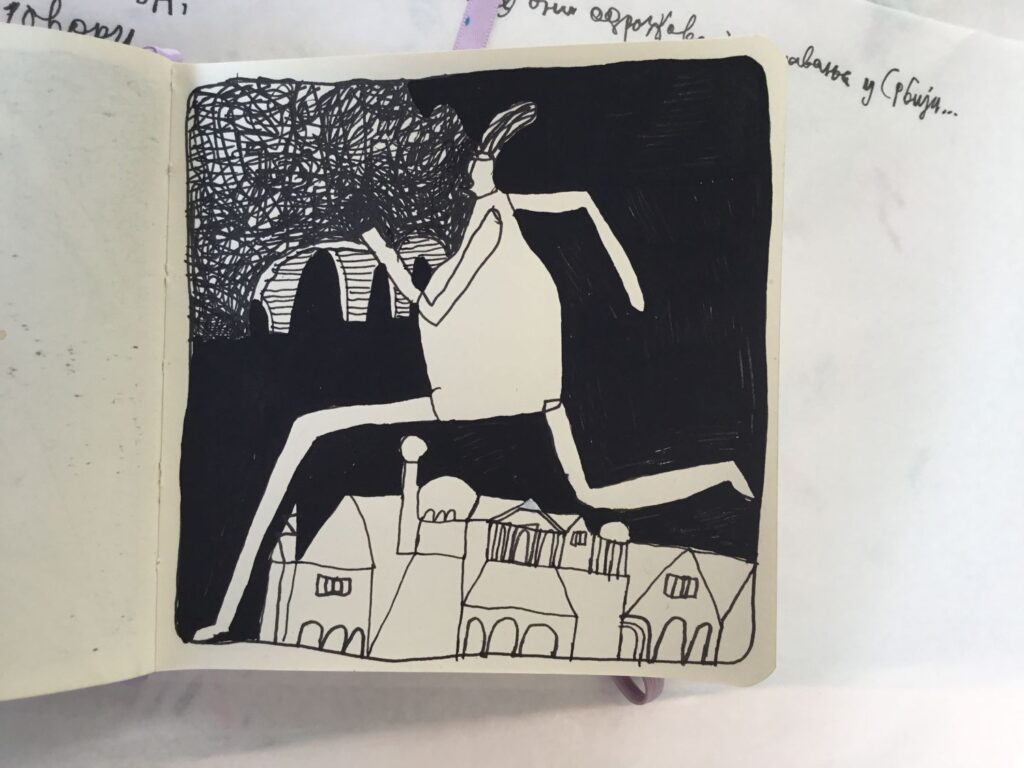
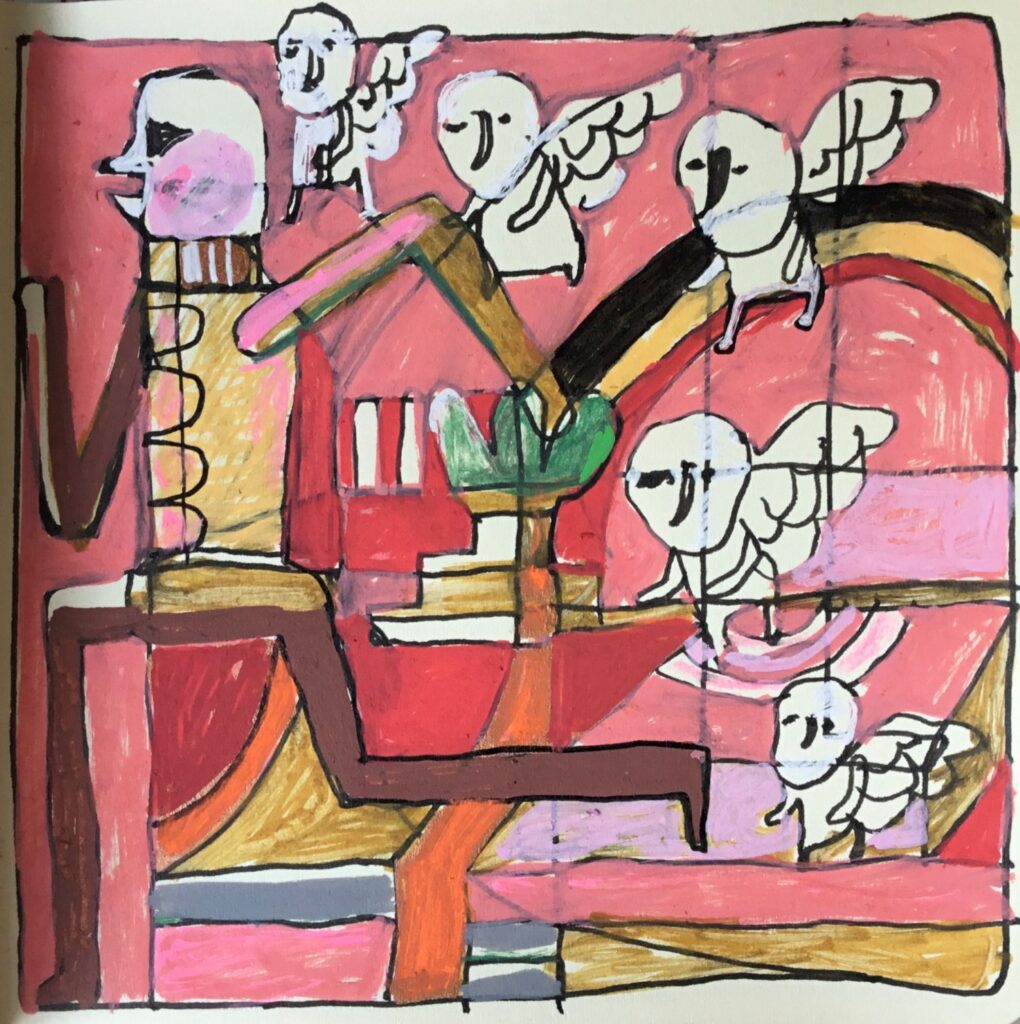
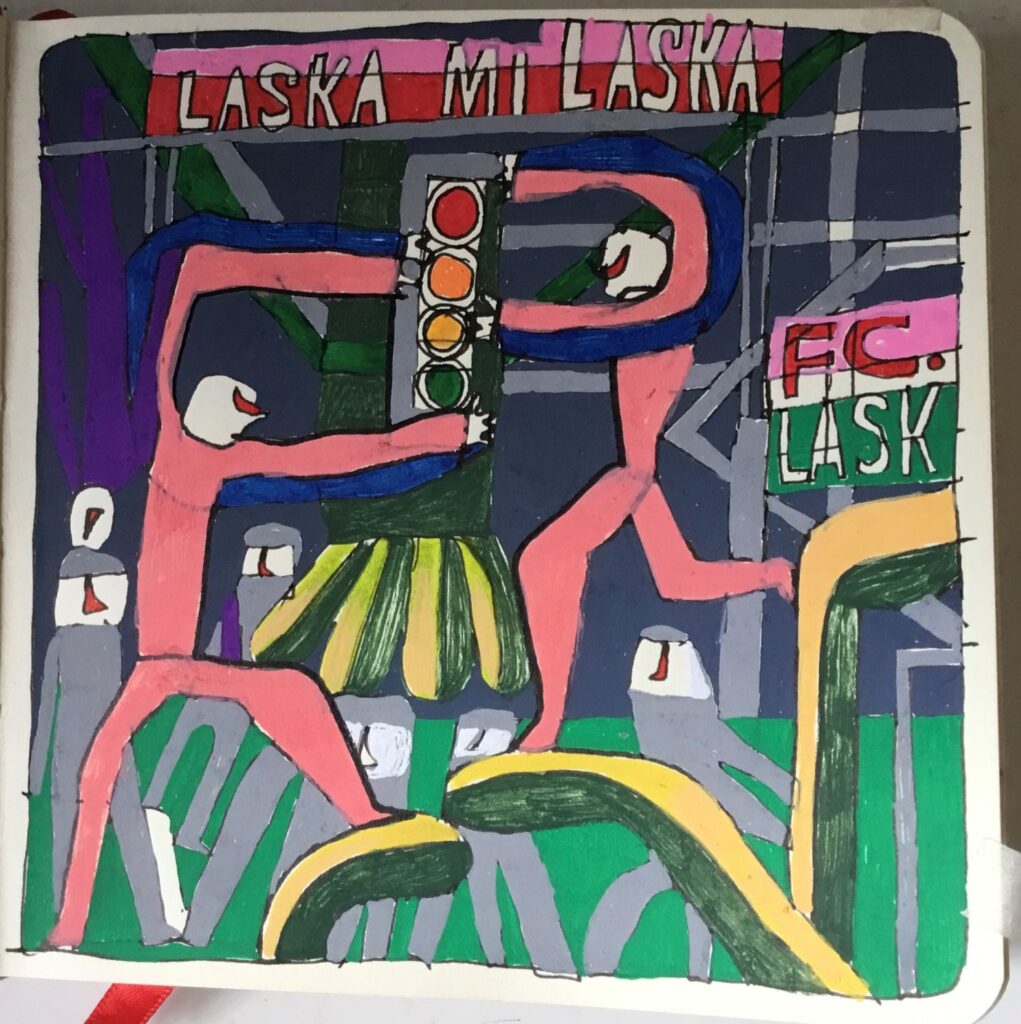
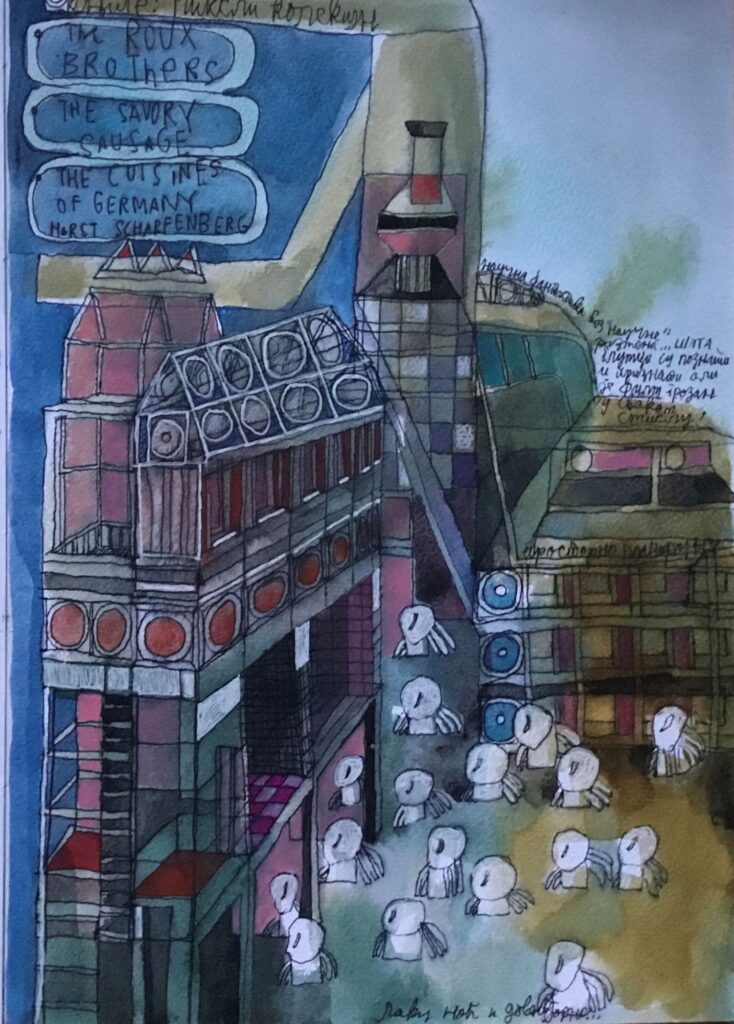
Miljan Vukićević’s art emerges from the margins—literally. From coffee stains and accidental marks in sketchbooks, he coaxes out characters, creatures, and shapes that respond to the world around him. “My drawings often come about ‘by antenna’—whatever gets picked up, goes on paper,” he explains.
In early 2025, as the protests escalated, those casual pages began to change. Weapons appeared on the pages. Notebooks were filled with the drawings of eyes — watching, warning, recording.
“I flipped through my notebook from February,” Miljan says, “and realized that riot gear had entered the sketches. The situation left its mark. I needed to demystify that fear. Eyes, eyes, eyes—everything is seen, everything is known. Awakening!”
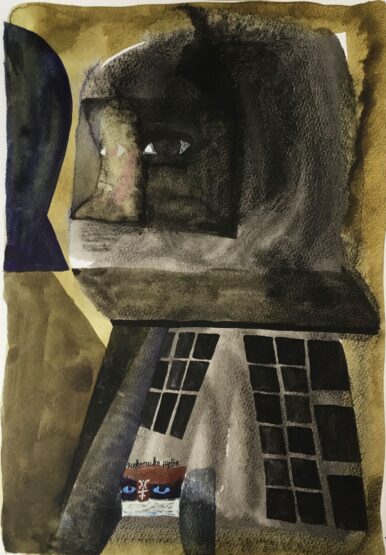
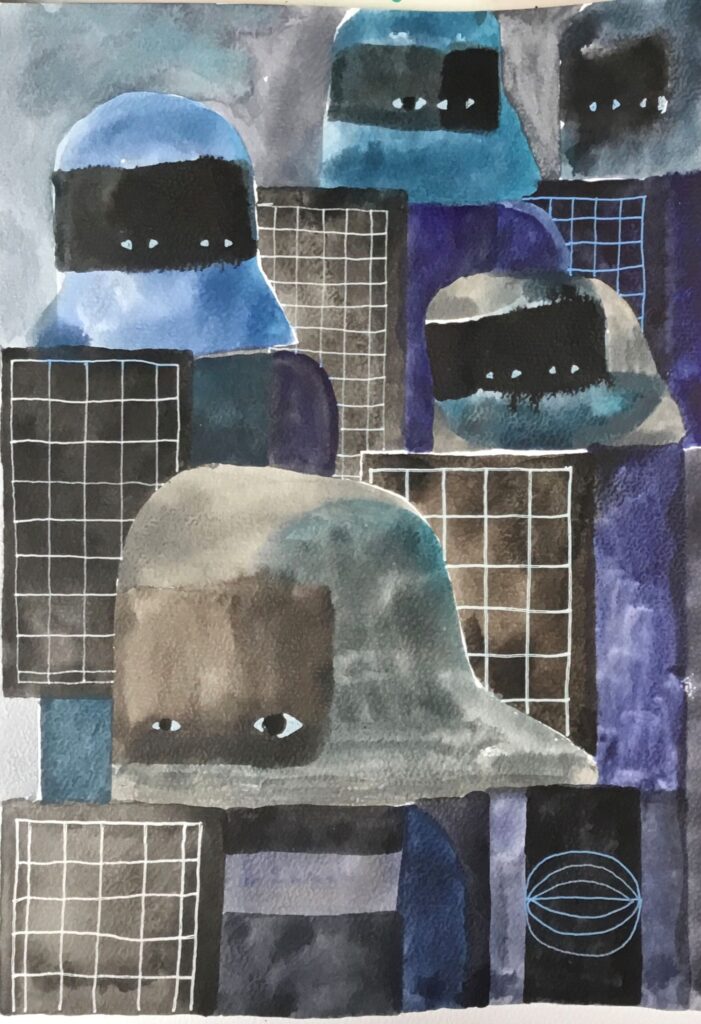
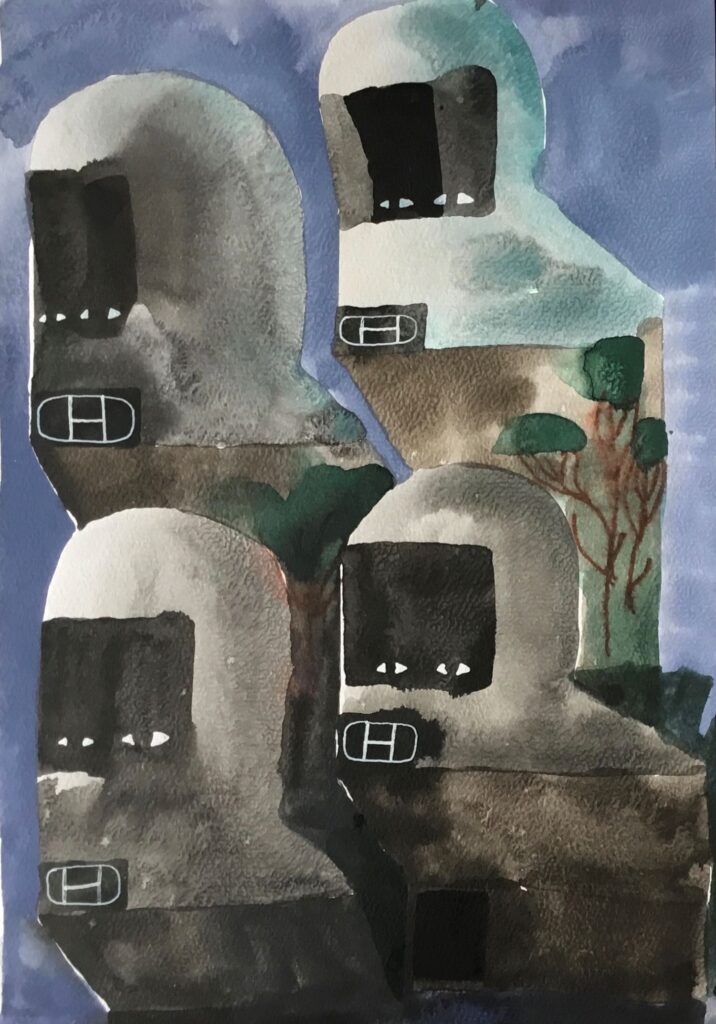
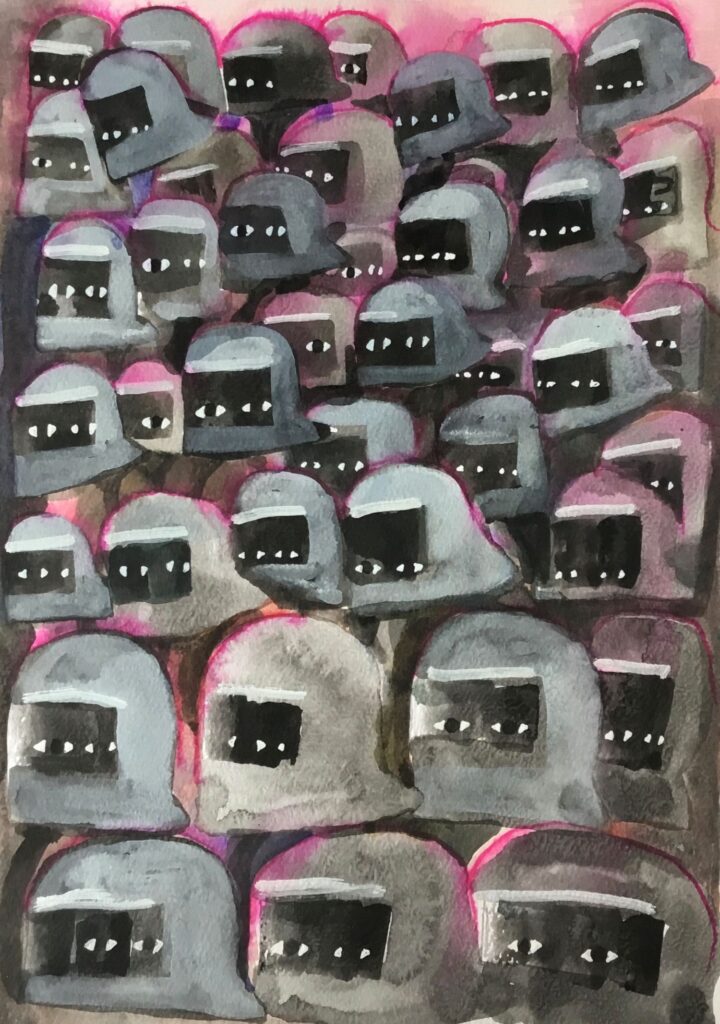
And then, when the masses of students decided to run from Novi Sad to Brussels in March, Miljan was drawn to get out of his sketchbook onto large canvases (see image below).
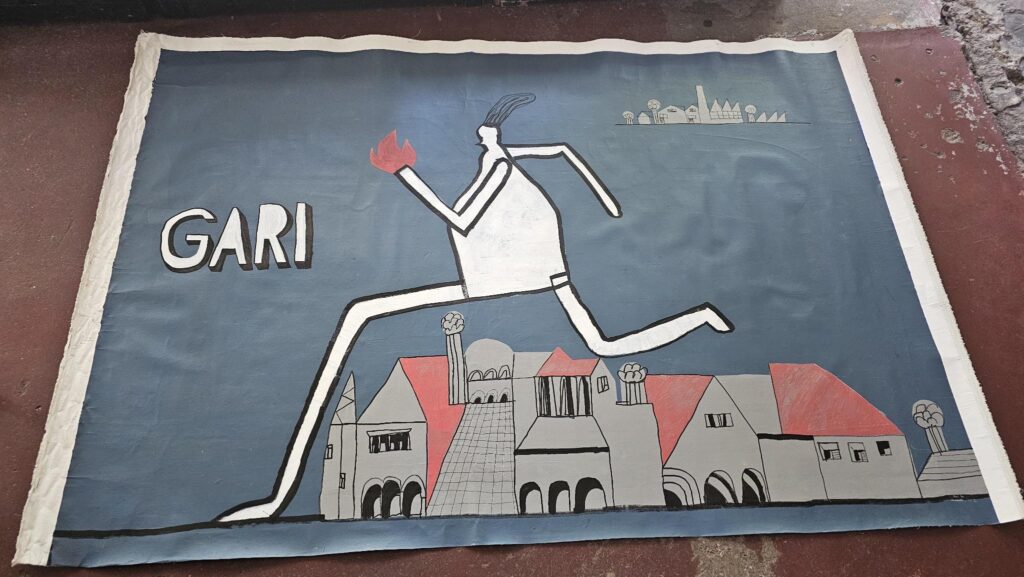
The youth will save the world (младост ће спасити свет)
Tanja Kostadinović offers a botanical, symbolic approach. One of her illustrations, created for the Instagram initiative Art is Blooming by Valentina Talijan, features the tongue-leaved Kostirka—a real plant, reimagined as a tribute to students who have energized this protest with creativity and courage.
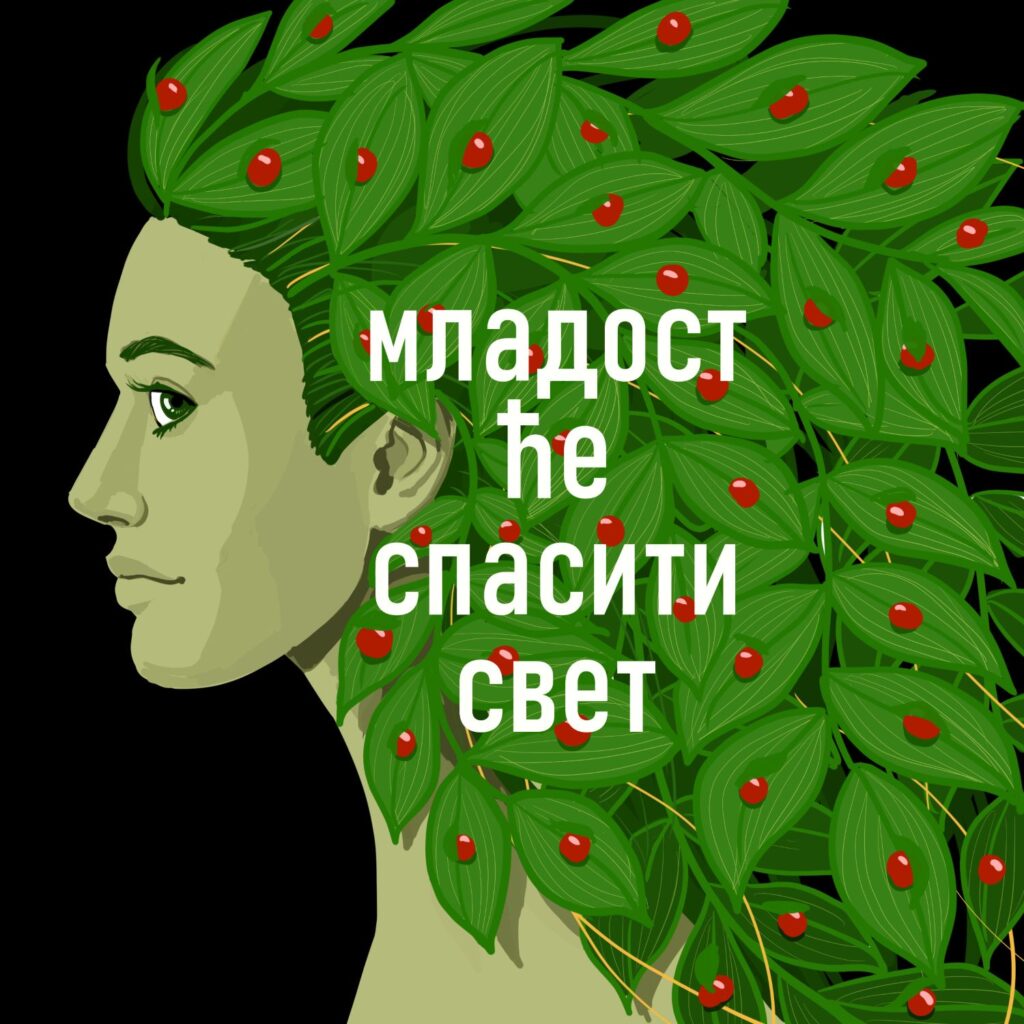
“For those of us who witnessed the student protests of 1997, it’s an incredible feeling to recognize those same ideals, that energy and creativity, in new generations. The illustration also seeks to honor the young women who stood in the front lines, shoulder to shoulder with their male colleagues,” she reflects.
Freedom dies in the dark (слобода умире у мраку)
In another work, created after the Novi Sad tragedy, darkness dominates the frame. Tanja explains that, “At protests, darkness is the time when things become dangerous—because it’s believed that in the dark, truth is easier to hide. Darkness becomes the time for aggression and repression, and in Serbia, darkness has spread across all aspects of public life. And so, along with freedom and truth, responsibility also seems to easily get lost in the dark..”
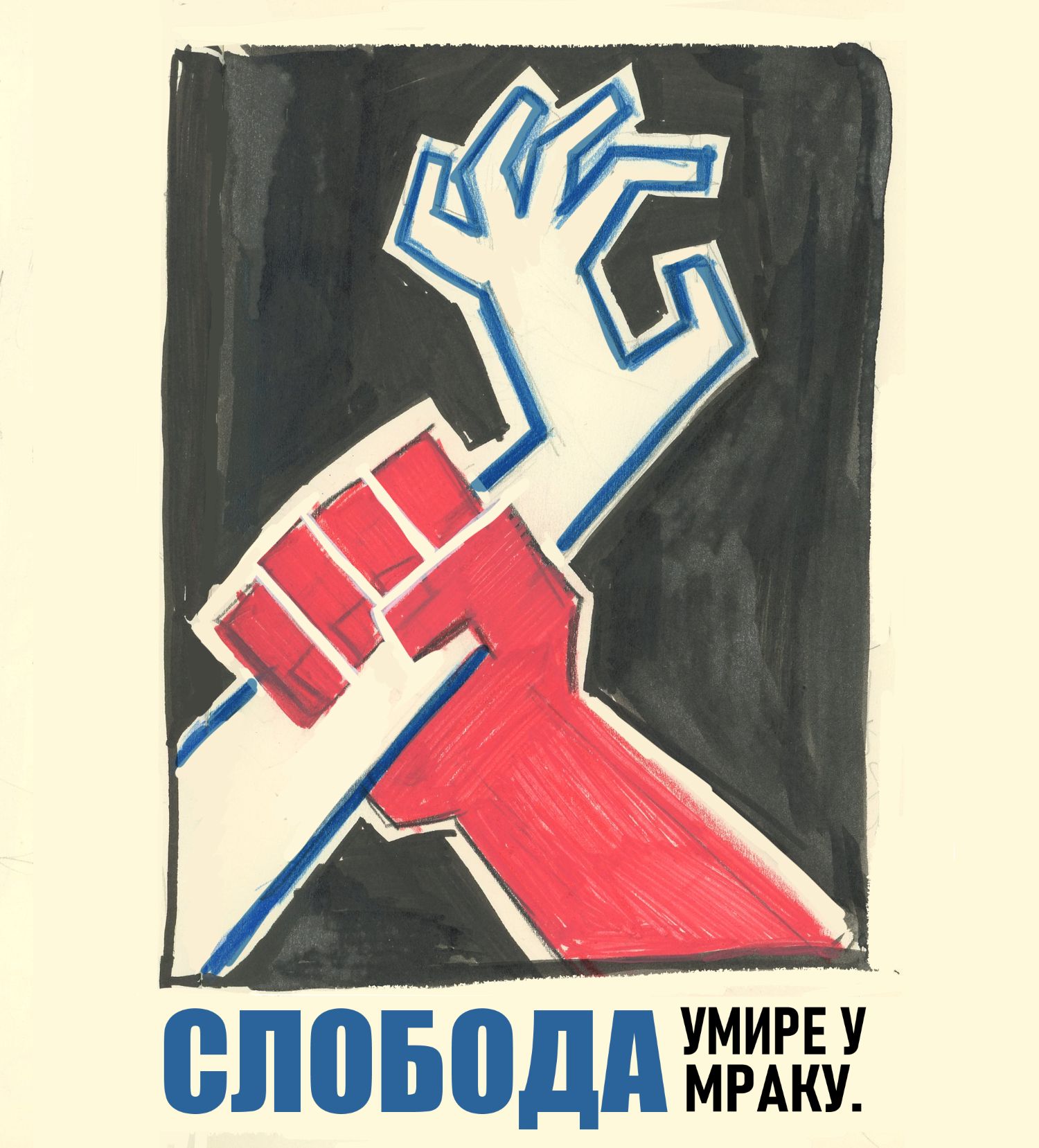
Her third piece is more joyful, filled with the symbols of protest that refuse to die…
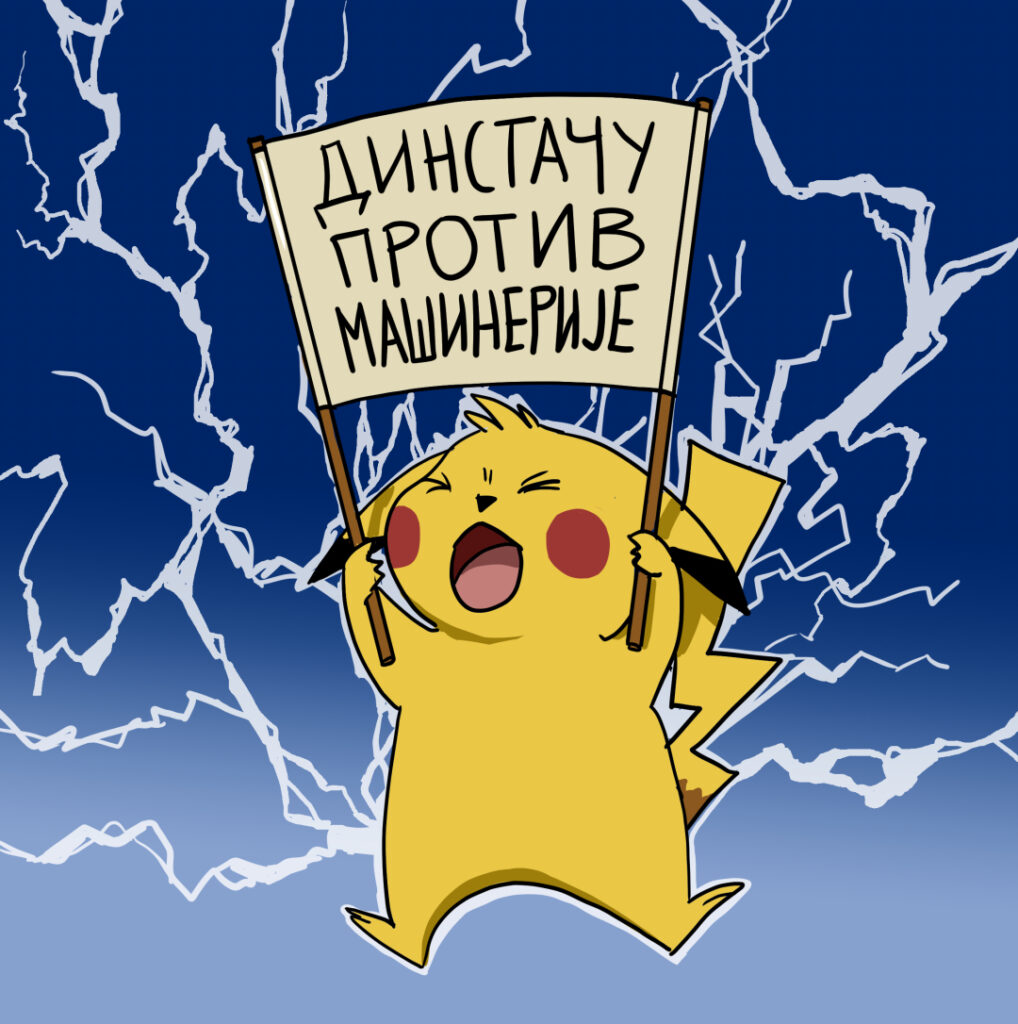
“I had a desire to illustrate my favorite symbols of the protest at that moment. Although this protest emerged from tragedy and darkness, I am continuously amazed by its creativity and incredible spirit. It gives us hope for the future — that we still have strength, a sense of togetherness, empathy, and even humor. As long as all of that exists, so will we.”
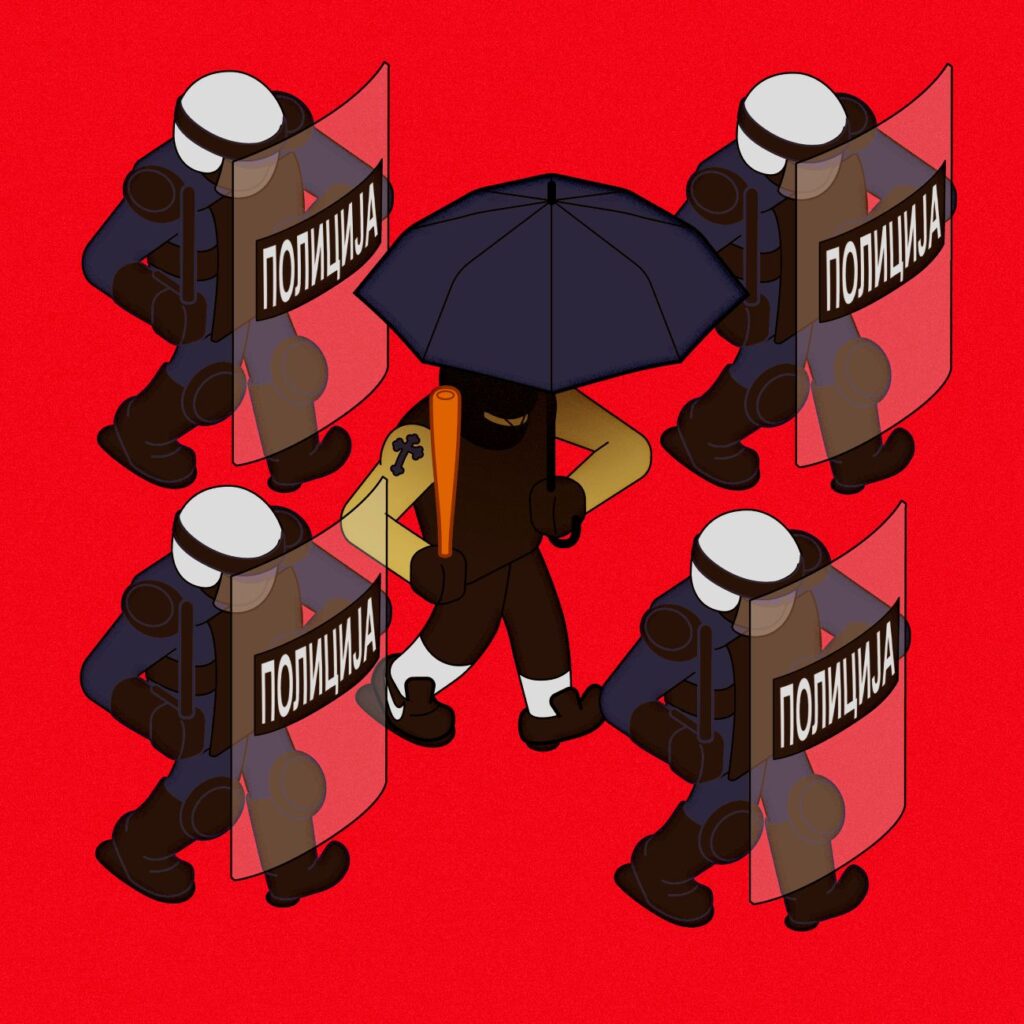
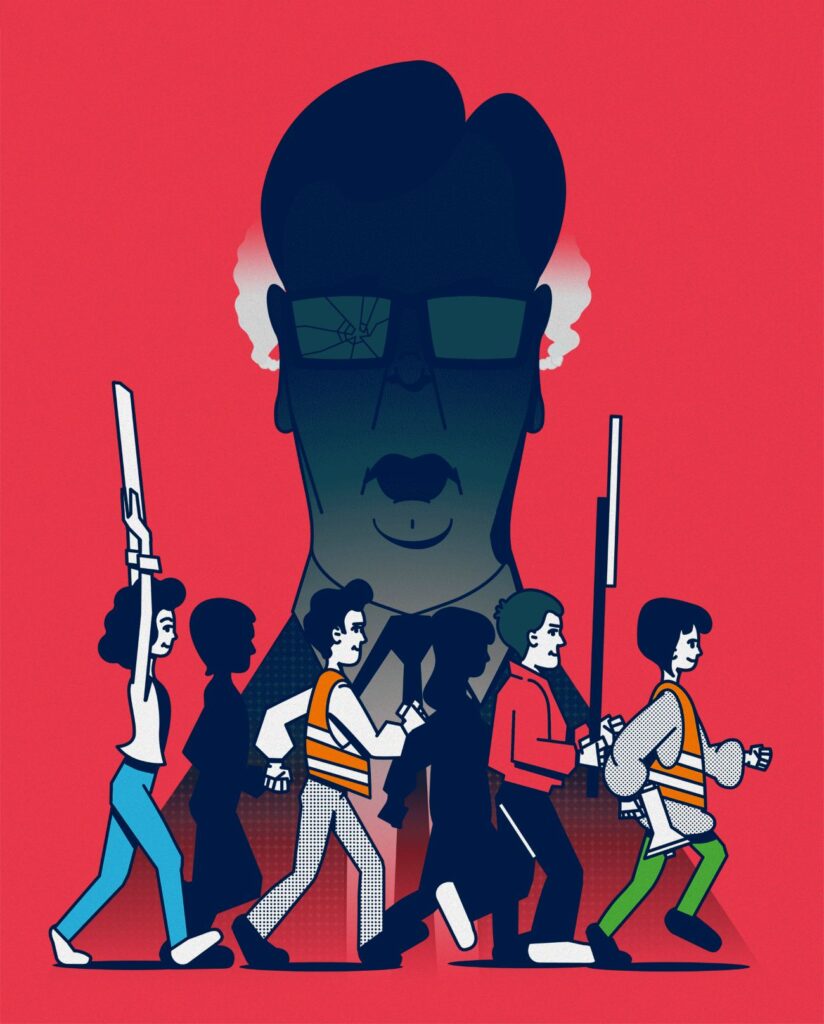
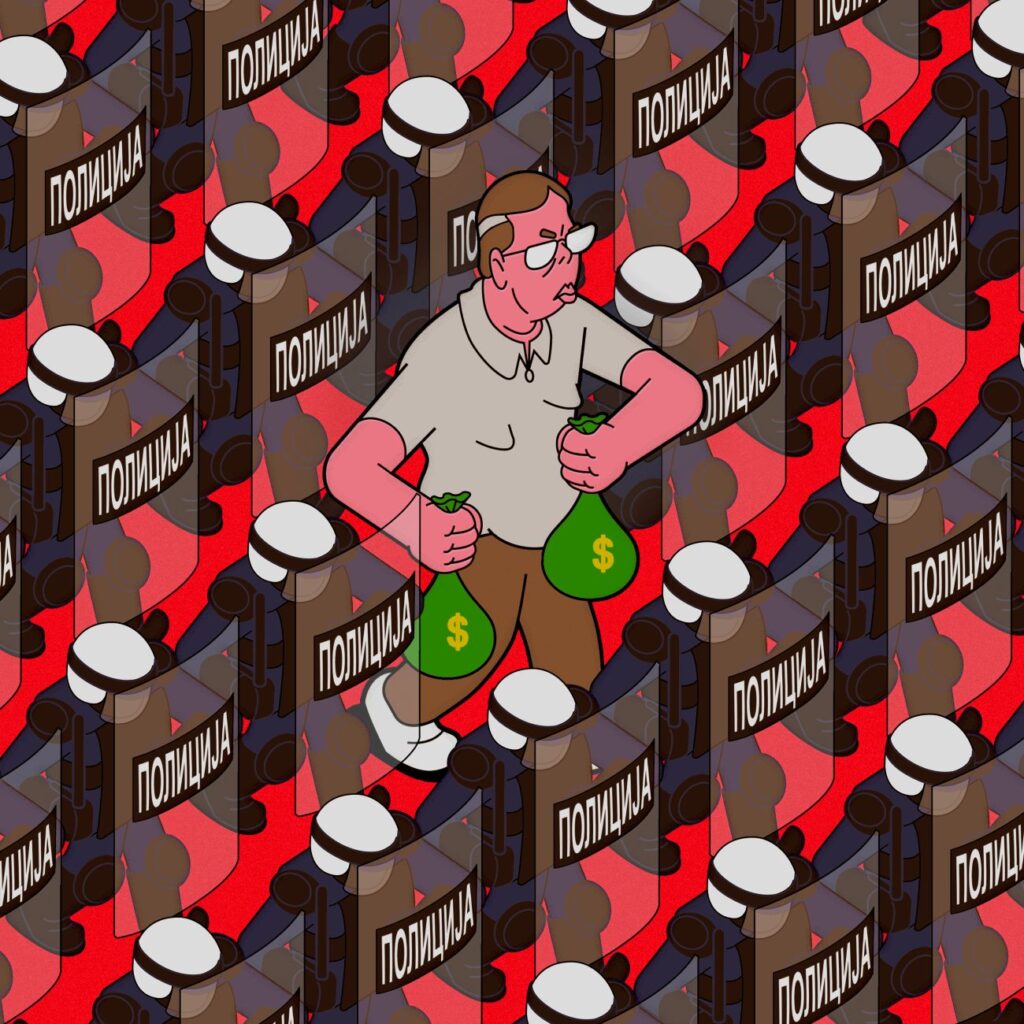
Dušan Zaklan is an illustrator and designer from Novi Sad, who contributes to the protest with GIFs about the protests. In his GIFs he especially targets the deadly triangle of the Vučić-regime, the police, and the masked right-wing hooligans.
He tells us:
‘The only value that Vučić’s triangle knows, and the only ideology they bow to, is money. When chain of money breaks, their connections will weaken. In order for that to happen, people in Serbia need to continue with protests. Foreign corporations and governments that are interested in Serbia’s land will be forced to rethink their positions if the people of Serbia, in great majority, say NO.’
His own contribution to the protest is driven by an awareness that artists should use their voice, and their tools:
‘When the scale of protests is this big, and for important reasons, it’s unnatural to sit back and mind your business. Since November last year, there hasn’t been space for me to do some silly illustrations for practice and fun. Instead, I started doing these antigovernment GIFs as part of my contribution to the protest. It just came naturally. Everybody should contribute with the means that they have, so we, as artists, have to make art.’



